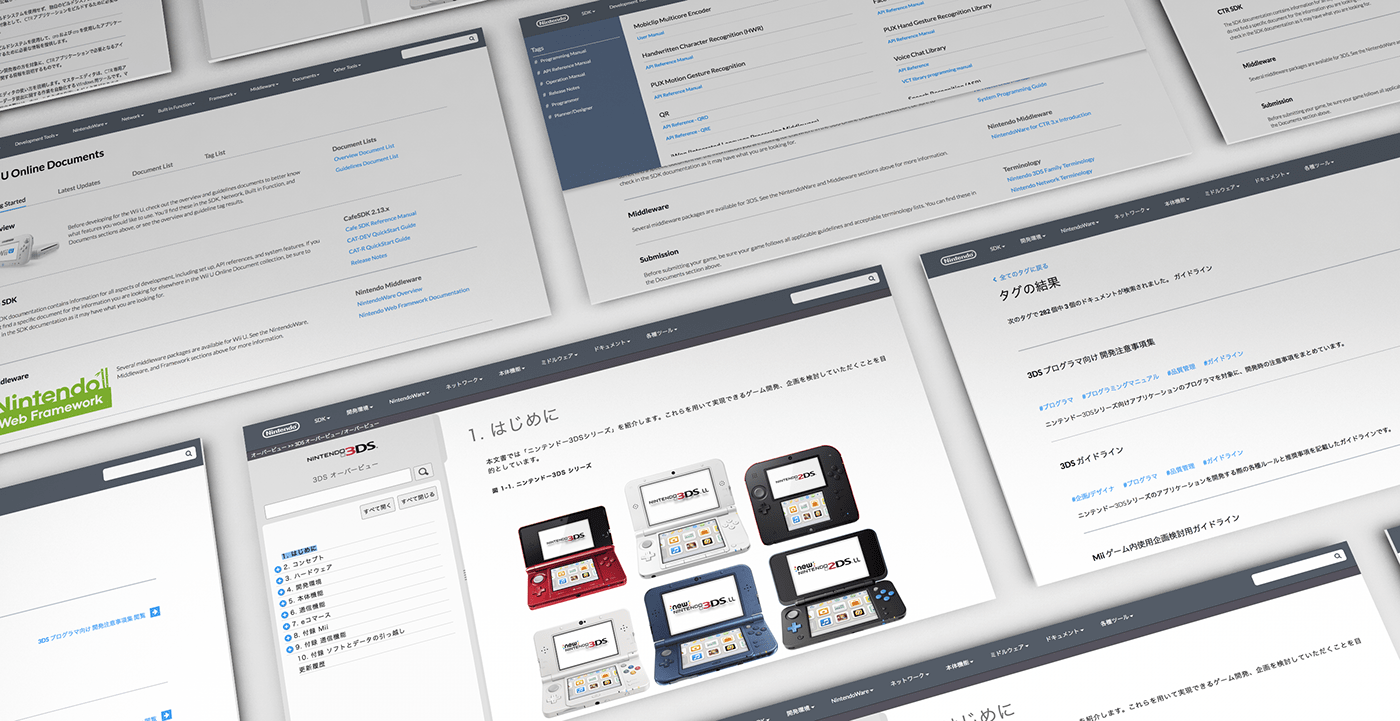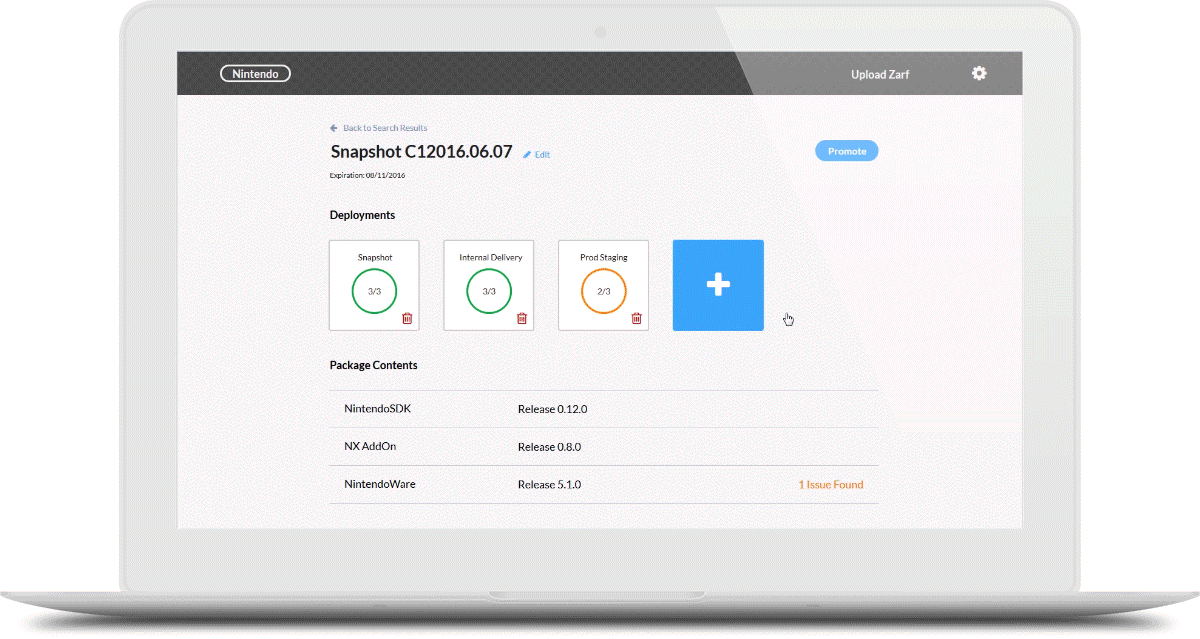Nintendo Developer Experience
Built and lead a team of 10+ cross-departmental design employees to optimize the end-to-end game production experience for first-, second-, and third-party developers resulting in 1,000+ more Switch titles than Wii U in half the shelf life.

Goal: Increase number of Switch titles
In 2015, there were 40+ regionally-dispersed teams that owned a piece of the Nintendo developer and publisher process. This ad-hoc practice made game publishing nearly impossible for third-party developers. If Nintendo desired more titles for their ~75M customers, they would need to increase developer engagement.

Game development process
We collaborated with each of the 40+ teams throughout Asia, Europe, and the Americas to record and merge their processes into the current end-to-end experience. From there we investigated automation solutions to produce a seamless developer experience.

Nintendo Developer Portal
When we first began, each Nintendo team had a unique website to host their slice of the process. Most of them were merged with the Nintendo Developer Portal content. The portal architecture guides users to successfully develop and publish games and provides a jumping-off point to other required tools in the end-to-end developer experience.


Nintendo Online Documents
With hundreds of documents per console, organizing them in a meaningful way for multiple cultures meant we needed a flexible search system with multiple paths of discovery. This system arrived in the form of tags, categories, and a fuzzy search using approximate string matching.

User testing
Our original design allowed users to filter by either category or tag. Since these values were predefined, we decided to use two autocomplete fields and show the available options on click. This interface caused two issues during testing.
1. Users didn’t understand the difference between categories and tags.
2. Users expected the interface to act similar to Google search.
Search result
We replaced the two filters with a single search box. The fuzzy search allowed users to enter any word, across all columns, including tags and categories. The final design successfully enables users to quickly discover relevant documents.

Nintendo Developer Interface
The transition from reading documents to developing a game begins with a desktop application. The Nintendo Developer Interface and Zarf Server Dashboard helps developers download and deploy the Nintendo SDK. I assigned a team of designers to improve the user experience and apply a consistent interface to match the Nintendo Developer Portal.


Nintendo Developer Suite
Once development begins, the game developers are presented with a suite of Nintendo applications to assist in the design and development of Nintendo titles. One of the most important applications permits developers to preview their code on a Switch device.

Developer Experience Project
The Nintendo Developer Suite is similar to the Adobe Suite, but for game development. With so many applications, user testing would not be practicable without first pinpointing the issues. We needed to test a set of users while they develop a game with the suite. To accomplish this, we formed an internal team of Artists, Programmers, Sound Engineers, and Testers to produce a set of games using various middleware, coupled with the Nintendo Developer Suite.

Diary study
Team members recorded their daily goals and blockers in a digital diary. Each entry was parsed by an analyst to pinpoint bugs and experience issues. Bugs were added to the backlog and experience issues were returned to the Design Team to test and solution.


Return to the Nintendo Developer Portal
Once the game is in a ready-state, the development team uploads the project file to the Nintendo Developer Portal. Before publishing is granted, the title is reviewed by Nintendo. In the past, reviewing games involved nearly half of the 40+ ad-hoc teams. Today, the process is self-contained within a workflow.


